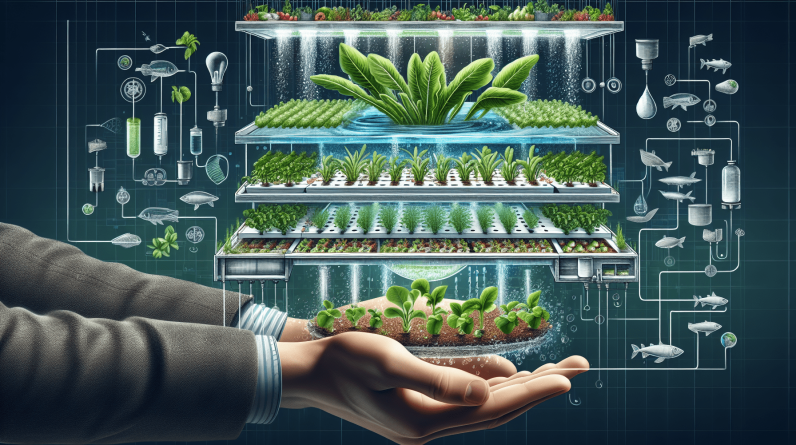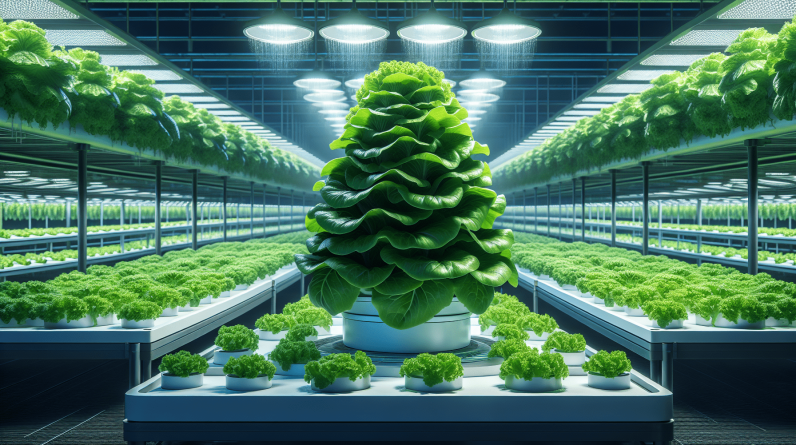
Are you looking to make your vegetable garden more sustainable and efficient? Consider implementing hydroponic growing systems, which offer significant advantages over traditional soil gardening methods. By delivering a nutrient-rich solution directly to the roots of your plants, hydroponics can help them grow faster, produce more, and conserve water by up to 90%. This method also reduces the risk of soil-borne diseases and pests, leading to healthier plants with fewer chemical inputs. Embrace the benefits of hydroponic vegetable gardening and enjoy a bountiful harvest year-round, regardless of external weather conditions. Have you ever wondered how you can achieve efficient water usage in hydroponic vegetable gardening? Hydroponic growing systems offer a sustainable and innovative approach to cultivating fresh crops. With the ability to conserve water and eliminate soil as a growing medium, hydroponics present a more efficient and effective way to grow vegetables. Let’s explore some practical tips and techniques to optimize water usage in hydroponic gardening.
Understanding Hydroponic Vegetable Gardening
Hydroponic gardening relies on a nutrient-rich water solution to provide essential minerals directly to plant roots, eliminating the need for soil. This method allows for faster growth rates and increased yields while conserving water compared to traditional soil gardening. By understanding the basics of hydroponic systems, you can effectively manage water usage for optimal plant growth.
In hydroponic systems, water acts as a carrier of essential nutrients for plants, delivering them directly to the roots. This targeted delivery method ensures that plants receive the necessary elements for healthy growth without wasting resources. By eliminating the need for soil, hydroponic gardening minimizes water loss through evaporation and runoff, making it a more water-efficient option for cultivating vegetables.
Benefits of Hydroponic Gardening for Water Efficiency
When it comes to water efficiency, hydroponic gardening offers several advantages over traditional soil-based methods. By understanding these benefits, you can make informed decisions to optimize water usage in your hydroponic vegetable garden.
Hydroponic systems use up to 90% less water than traditional soil gardening, making them a more sustainable option for water-conscious gardeners. This significant reduction in water usage is achieved through recirculating systems that continuously deliver and replenish the nutrient solution to plants, minimizing waste. Additionally, the absence of soil in hydroponic systems eliminates water loss through evaporation and percolation, further enhancing water efficiency.
Through precise control of water and nutrient delivery, hydroponic systems ensure that plants receive the right amount of moisture without excess runoff or leaching. This targeted approach to water management not only conserves resources but also promotes healthier plant growth by preventing water-related stress and nutrient deficiencies.

Strategies for Efficient Water Usage in Hydroponic Vegetable Gardening
To achieve optimal water efficiency in your hydroponic vegetable garden, it’s essential to implement strategies that minimize waste and maximize plant growth. By following these practical tips, you can ensure that your hydroponic system operates at peak efficiency while conserving water resources.
Use a Recirculating System
One of the most effective ways to optimize water usage in hydroponic gardening is to utilize a recirculating system. In a recirculating system, the nutrient solution is continuously circulated and replenished, ensuring that plants receive a consistent supply of water and essential minerals. This approach reduces water waste by recapturing and reusing excess nutrient solution, minimizing runoff and evaporation.
By implementing a recirculating system in your hydroponic garden, you can maintain a closed-loop water cycle that maximizes water efficiency and promotes sustainable plant growth. This method not only conserves water but also reduces the need for frequent refills, saving time and effort in maintaining your hydroponic system.
Monitor and Adjust Water Levels
Proper monitoring of water levels is crucial for efficient water usage in hydroponic gardening. By regularly checking the reservoir or nutrient tank, you can ensure that plants have an adequate supply of water without overfilling or underfilling the system. Maintaining optimal water levels not only promotes healthy plant growth but also prevents water wastage through spills or leaks.
In addition to monitoring water levels, it’s essential to adjust the nutrient solution concentration to meet the specific needs of your plants. Different plant species and growth stages require varying levels of nutrients, so it’s important to tailor the water solution accordingly. By fine-tuning the nutrient concentration, you can optimize plant growth and minimize nutrient waste in your hydroponic system.
Implement Water-saving Techniques
Incorporating water-saving techniques into your hydroponic garden can further enhance water efficiency and promote sustainable cultivation practices. By adopting simple strategies such as drip irrigation, aeroponics, or wicking systems, you can reduce water usage and minimize environmental impact.
Drip irrigation delivers water directly to plant roots in controlled amounts, avoiding excess runoff and evaporation. This method ensures that plants receive a consistent water supply while conserving resources and promoting efficient nutrient uptake. Aeroponics utilizes a misting system to deliver water and nutrients to plant roots suspended in the air, minimizing water usage and maximizing oxygen uptake. This innovative technique promotes rapid plant growth and root development while conserving water in the hydroponic system. Wicking systems use capillary action to draw water from a reservoir into the growing medium, providing a steady supply of moisture to plants without excess watering. This passive irrigation method is ideal for water-sensitive crops and helps maintain consistent soil moisture levels for optimal plant growth.
By incorporating these water-saving techniques into your hydroponic garden, you can reduce water waste and improve overall efficiency in water management. These simple yet effective strategies offer sustainable solutions for maximizing plant growth while conserving water resources.

Conclusion
Efficient water usage is essential for successful hydroponic vegetable gardening. By understanding the principles of hydroponic systems, utilizing water-saving strategies, and implementing sustainable practices, you can optimize water usage in your garden while promoting healthy plant growth. Whether you’re a novice or experienced gardener, incorporating these tips and techniques will help you achieve a thriving and water-efficient hydroponic vegetable garden. Happy gardening!










